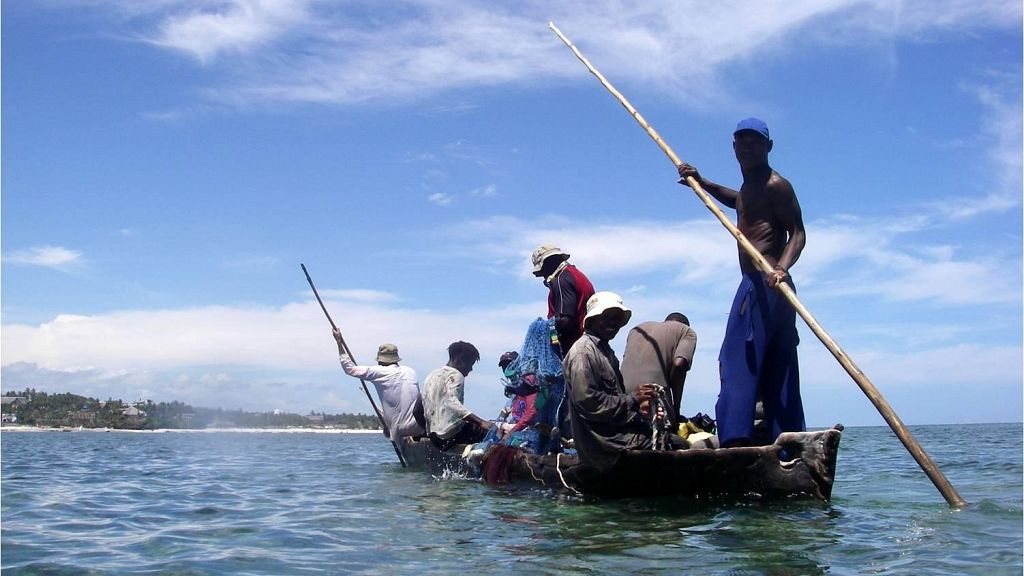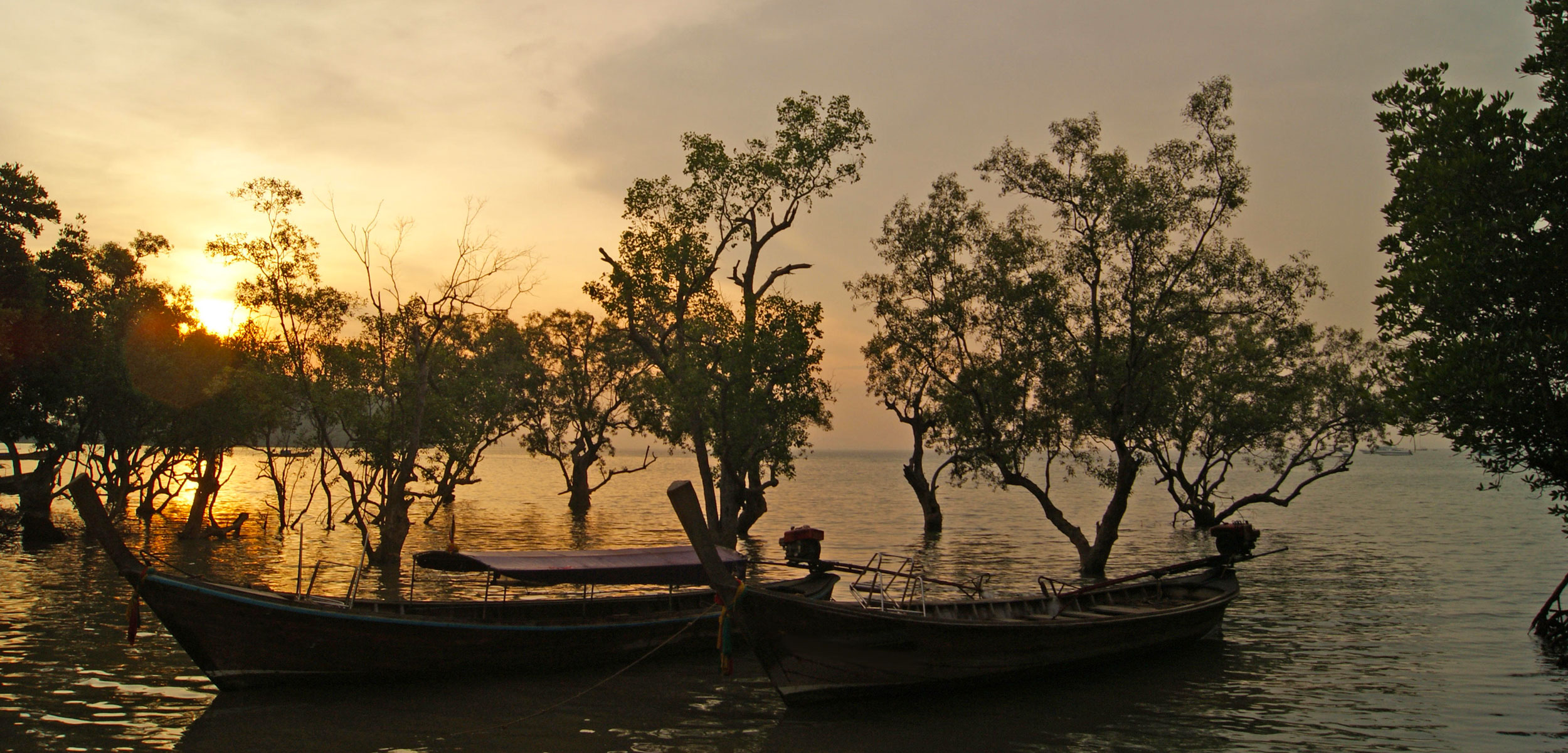PREVIEW VERSION
|
The MAP News
431st Edition Dec. 2, 2017 |
|
|
FEATURE STORY
Forests can beat humans at restoration, new study finds
 GLOBAL - When it comes to restoring deforested landscapes, letting them regenerate naturally through passive means is generally cheaper than human-driven, so-called “active,” restoration techniques like re-planting. But a new study finds it can actually also be more effective in tropical ecosystems. The authors say that letting tropical forests regenerate by themselves could help further large-scale restoration goals while at the same time saving money that could help scale-up forest restoration worldwide. The study, published recently in Science Advances, analyzed the findings from 133 other studies conducted across 115 landscapes to compare natural and active regeneration of tropical forests. Its results indicate natural restoration techniques were more successful than active restoration at restoring the biodiversity levels of birds, plants, and invertebrates, as well as vegetation structure. Specifically, the study found biodiversity in naturally regenerated landscapes was 34 percent to 56 percent higher and vegetation structure 19 percent to 56 percent higher than in areas that had been actively restored. “These findings suggest that lower cost approaches to restoring biodiversity and vegetation structure in tropical forests can actually be more effective than active restoration,” study lead author Renato Crouzeilles, an associate researcher at the International Institute for Sustainability, said. READ MORE AFRICA Protecting corals and mangroves, Kenya's fishermen net cash and more fish  KENYA - Fishing communities in Kenya’s southern coast are taking steps to conserve marine life that is under threat, by creating underwater gardens in the Indian Ocean. Fishermen and other residents in Wasini Island hope that they can replace destroyed coral reefs with new ones, to help harbor fish and draw hundreds of thousands of tourists who come to visit Kenya’s coast each year. The project was started in 2014 and the fishermen were later trained by conservationists on how to cultivate the coral gardens. Boat operators help fund the program while divers go down to the ocean floor to cement the corals in place. The large-scale collapse of coral reefs has exposed Kenya to increased erosion and the loss of fisheries. Reefs provide home for marine life. The eastern African countries of Mozambique, Tanzania and Somalia as well as the Indian Ocean island nations of Seychelles, Mauritius and Comoros are also affected. READ MORE ASIA Over 100 NGOs raise concern over plight of environmental defenders PHILIPPINES - Declaring “it is not a crime to defend the environment,” a total of 116 non-government organizations, social movements, and other environmental groups came out with a unified statement raising concern over the worsening human rights situation faced by environmental defenders in the Philippines, declared the third deadliest country in the world and deadliest in Asia in the 2017 Global Witness Report on Killings of Environmental and Land Defenders. Hailing from 25 different countries, the groups noted that “in just more than a year under the current administration of President Rodrigo Duterte in the Philippines, at least 42 environmental defenders have been killed, 240 have been slapped with harassment lawsuits, and at least 18,263 have been forcibly displaced because of their resistance to destructive projects.” The statement came out amid increasingly atrocious human rights violations perpetrated against Filipino environmental defenders and other activists over the past two weeks. Incidents of extrajudicial killings, illegal arrests, enforced disappearances, and forced evacuations occurred in just over the past week in the provinces of Mindoro Oriental, Batangas, Agusan del Sur, Compostela Valley, and Surigao del Sur. Affected communities mainly confronted mining, plantation, and coal issues. The groups observed that “civilians are systematically targeted by bloody military operations under an increasingly aggressive ‘Oplan Kapayapaan’ counter insurgency program and the dark shadow of Martial Law,” noting the recent systematic efforts of justifying killings and militarization by accusing environmental defenders as armed communist rebels or sympathizers. READ MORE Maldives planning to convert mangroves forest to an airport MALDIVES - The island of Kulhudhuffushi hosts the 7th largest mangrove in the Maldives. It is home to 8 species of true mangrove plants, 42 associated plant species and supports the entire ecosystem of the island. This white clay mangrove is home to various migratory birds and fishes. In addition, the mangrove ecosystem also provide livelihood activities for over 400 women and their families in the island and is closely linked to the culture and heritage. However, the Government of Maldives is currently in the process of reclaiming the mangrove to build an airport to fulfill a presidential campaign pledge. The Government promises the airport will bring development to the island by creating jobs and stimulating economic growth. However, domestic airports in Maldives are an extremely expensive investment with low returns. Given the employment data from other airports in the country, it will create maximum 40‐100 jobs. On the other hand, if money is invested in essential services in the island such as tertiary medical services, higher education, eco tourism and better job opportunities will be created. Maldives is extremely vulnerable to climate change and mangroves play a key role in protection of coastal ecosystems. READ MORE Mangroves lack the genetic diversity to adapt to climate change  CHINA - Mangroves support coastal ecosystems around the world. In the tropics and subtropics, they rim coastlines and estuaries in thick green bands, providing shelter for everything from monkeys to Bengal tigers to critically endangered sloths. Considering their wide range and unique adaptations to saltwater environments, mangroves seem like an evolutionary success story. But the reality is that mangroves have surprisingly low genetic diversity, which will be a big problem as they attempt to adapt to changing conditions. New research suggests that mangroves may break rather than bend under the stress of the climatic changes to come. Suhua Shi, an evolutionary biologist at Sun Yat-sen University in Guangzhou, China, and her colleagues surveyed the genetic material of six of the world’s roughly 100 mangrove species, examining 26 populations around the Gulf of Thailand and China’s Hainan Island. The team found that within each species, mangroves are so low in genetic diversity that individual trees are essentially indistinguishable from one another. This means they will have less chance of adapting to a changing world than more diverse species. The finding is surprising, as mangroves seem like paragons of survival. READ MORE Community effort overcomes onslaught of the unsustainable shrimp industry INDIA - A firebrand conservationist, Appa Rao Allarpathi has been regarded as the Mangrove Man of India – a title he detests. He met me as a volunteer for the Fishing Cat Conservancy, the organisation that invited me to observe their compelling conservation and awareness work in the Krishna river delta. Appa Rao’s connection with this habitat began when his work as a consultant for telecommunication companies took him to the surrounding areas to survey locations for what he now says are ecologically-disastrous mobile communication towers. This left an indelible mark on him, as he began to see the destruction of the pristine forest cover of the Krishna district. Inspired to do something about this, he set out on his motorbike to investigate and research the fascinating mangrove ecology of the region… self-funded. What he saw amazed him – somehow, despite the challenges thrown at them by us, parcels of mangroves thrived. What is more, the ecosystems were home to an abundance of crustaceans, mammals and amphibians – an extraordinary array of biodiversity that depend on these relict wildernesses for their survival. He also began to see how Andhra Pradesh’s fisheries industry relied on the continuing health of the mangroves that serve as a nursery, breeding and feeding ground for fish. In the last decade, however, possibly three-quarters of the mangroves have been encroached upon by locals and outside investors hungry to set up still more ecologically-disastrous fish and shrimp farms. Large tracts of mangroves therefore continue to be razed brutally to the ground to make way for what can only be a very temporary shrimp industry. READ MORE AMERICAS Communities front and center at Fourth Mangrove Forum EL SALVADORE - Community groups from across El Salvador gathered November 8 for the Fourth National Mangrove Forum to discuss mangrove restoration policy and progress, sea turtle conservation, and community co-management of natural protected areas. The event brought together around 350 people from community organizations, NGOs, academia, and government agencies, with some traveling from the far reaches of the country to participate. Representatives of community organizations from across the Salvadoran coast as well as from the municipal, state, and national governments attended. Several local and national media outlets covered the event. The forum took place in the Community Center of Las Mesitas, a small village nestled in the mangrove forest of the Bay of Jiquilisco. The location was a departure from the previous three forums which took place in hotels in the capital city of San Salvador, far removed from the places and people being discussed. It was important to have the forum take place in the area where conservation work is being done and symbolized a sense of solidarity and recognition of community interests. The forum was also the first one to go “zero waste”: no single-use plastics were used for meals. READ MORE OCEANA Villagers plant mangroves in race against rising seas  FIJI - On a muddy beach, under the glaring Fijian sun, villagers living on the banks of Laucala Bay in the capital of Suva carefully plant neat rows of mangrove seedlings as holidaymakers and locals swim in the ocean in the distance. What started as a hobby for Jim Tuimoce and the small Korova community has now become a serious attempt to guard them against the effects of rising seas and protect their way of life. The Pacific Island nation is seen as particularly vulnerable to climate change, with some of its 300 low-lying islands susceptible to rising seas. “The land has been washed away over the past 20 years. We plant mangroves here to protect the soil from eroding more,” said Tuimoce, 28, who lives with seven families in this coastal village that still uses traditional canoes to fish. Global attention on mangroves has grown due to their effectiveness in absorbing atmospheric carbon, one of the main drivers of climate change, as well as sheltering fisheries and protecting against coastal erosion. READ MORE Adani coal mine 'devastating' for Australia AUSTRALIA - Australia - Farmers and environmentalists in Australia are waging a fierce battle to stop a new mega coal mine planned for the country's northeast from going ahead. Indian energy giant Adani Group has said it will break ground this month on the project which is expected to become one of the largest coal mines in the world. The company says the Carmichael mine, which has the backing of the Australian government, will bring jobs and deliver royalties that will benefit Australians. But those opposing the project believe it could wreak havoc on the environment. "If that Adani mine goes ahead, it's going to be devastating," farmer Bruce Currie told Al Jazeera's 101 East. The project was due to be launched on Friday, with Deputy Prime Minister Barnaby Joyce due to attend, but the ceremony was cancelled due to rain, according to an Adani spokesman. READ MORE GLOBAL Tropical deforestation is getting bigger, study finds  GLOBAL - As nations race to keep forests standing and the world from warming, scientists are trying to figure out what human activities are causing deforestation and how best to stop them. A study published last week in Environmental Research Letters lends some new insights, finding the majority of forest loss in the tropics is due to medium- and large-scale clearing – hallmarks of industrial agriculture. The researchers who authored the study say policy changes are needed to reduce deforestation for commodity crops like palm oil. For their study, researchers at Duke University in the U.S. analyzed tree cover loss data detected by satellites between 2001 and 2012 and compiled by the University of Maryland. They restricted their analysis to tropical areas as defined by the UN’s Food and Agriculture Organization (FAO). They then analyzed tree cover loss trends in respect to four deforestation class sizes: less than 10 hectares, 10 to 100 hectares, 100 to 1,000 hectares and more than 1,000 hectares. According to the FAO, household and other small-scale farms in tropical, developing nations tend to clear less than 10 hectares, so the authors used this number to define smallholder operations. The data indicate that in the tropics overall, deforestation increased 53 percent between 2001 and 2012, from an average of around 69,000 square kilometers (6.9 million hectares or 26,600 square miles) per year during the first half of their study period to 79,000 square kilometers per year during the last half. READ MORE |
ACTION ALERTS
President Abdulla Yameen: Stop Destruction of Kulhudhuffushi Mangroves! CLICK HERE
|
Mangrove Action ProjectClick here to view past newsletters |
|










No comments:
Post a Comment
Note: Only a member of this blog may post a comment.